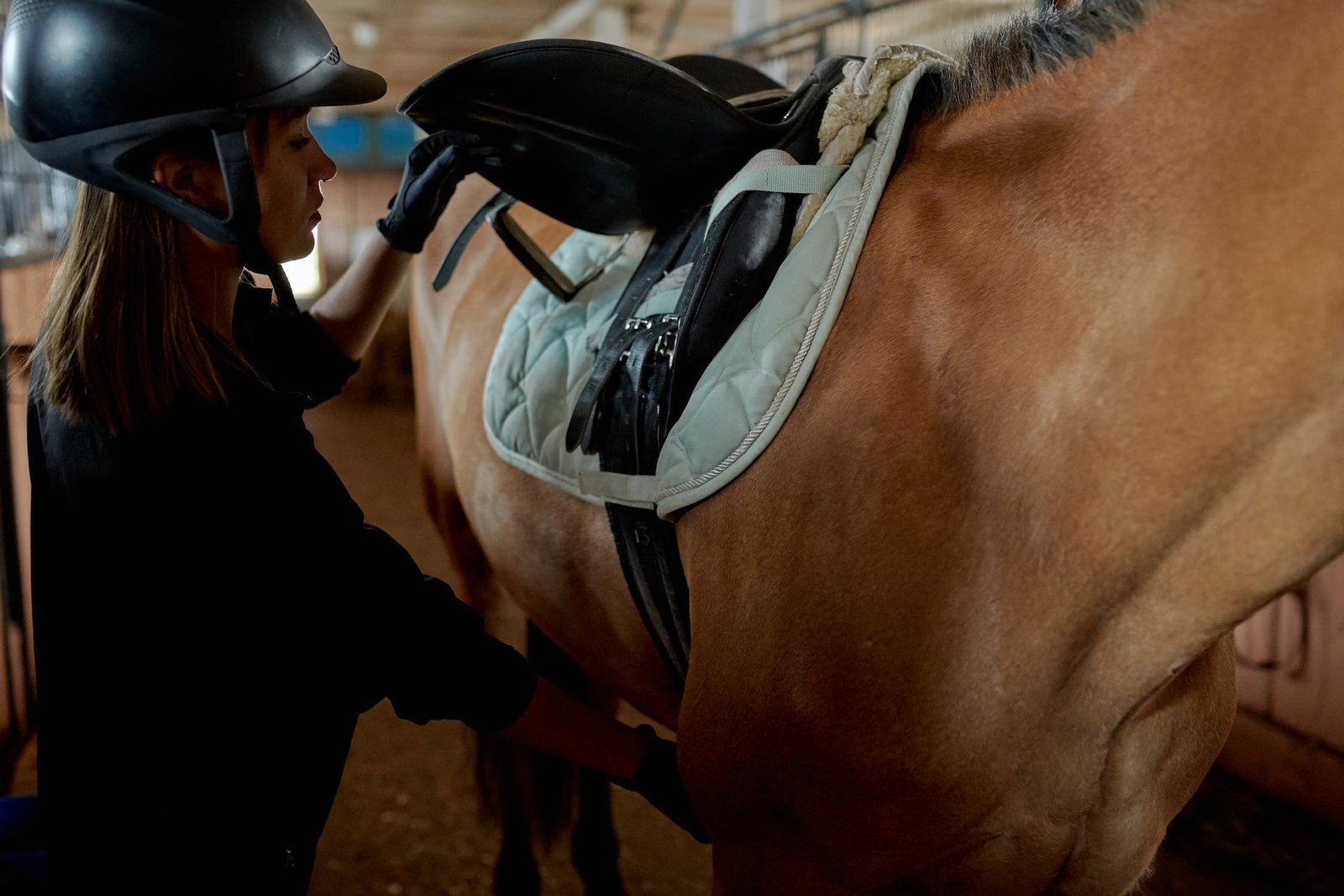
Horseback riding is a thrilling and rewarding activity, but it’s essential to prioritize safety whenever you’re in the saddle. Horses are powerful and unpredictable animals, and even experienced riders can encounter unforeseen challenges. In this blog post, we’ll explore crucial safety measures and equipment, including helmets, stirrups, and more, to ensure a safe and enjoyable experience for both beginners and seasoned equestrians.
1. Helmets: Your First Line of Defense
Helmets are arguably the most critical piece of safety equipment for horseback riding. They protect your head in the event of a fall or impact, reducing the risk of traumatic brain injuries. Here are some key points about helmets:
- Proper Fit: Ensure your helmet fits snugly but comfortably. It should sit level on your head, covering your forehead, and the chin strap should be securely fastened.
- Certification: Look for helmets that meet safety standards, such as ASTM (American Society for Testing and Materials) or SEI (Safety Equipment Institute) certification.
- Replace After Impact: If you have a fall or your helmet sustains an impact, replace it immediately, as it may no longer provide adequate protection.
Our top 2 Favorite Helmets:
- Beginner and Budget Friendly: TuffRider® Starter Helmet with Carbon Fiber Grill
- Extra Protection and Safety: Charles Owen AYR8® Plus Helmet
2. Riding Boots: Protect Your Feet
Riding boots are designed to provide stability and safety while riding. They prevent your foot from slipping through the stirrup and offer protection against potential injuries. Here are some considerations:
- Heel and Sole: Riding boots should have a defined heel to prevent your foot from sliding through the stirrup and a sole with adequate grip.
- Avoid Loose Footwear: Avoid riding in shoes or boots with smooth soles or excessive tread, as they can get stuck in the stirrup.
Our Favorite Boots:
- Paddock Boot: Saxon Children´s Syntovia Zip Paddock Boots
- Tall Boot: Ariat® Ladies’ Heritage Contour II Field Boots
3. Stirrups: Maintaining Balance
Stirrups are the footholds attached to the saddle, and they play a crucial role in maintaining balance and stability. Proper stirrup usage is essential for safety:
- Correct Length: Adjust the stirrup length to allow your heel to be aligned with your hip while your leg hangs relaxed. This position aids balance and reduces the risk of your foot becoming trapped in the stirrup.
- Safety Stirrups: Some riders prefer safety stirrups with a release mechanism that allows your foot to come free in the event of a fall.
4. Safety Vest or Body Protector: Additional Protection
Safety vests or body protectors are optional but can provide additional protection, particularly for riders involved in jumping or other high-impact disciplines. These vests are designed to absorb and distribute impact forces.
- Proper Fit: Ensure your safety vest fits snugly but allows freedom of movement. It should cover your chest, back, and sides.
Our Favorite Body Protector: Charles Owen JL9 Body Protector
5. Riding Gloves: Grip and Protection
Riding gloves offer a better grip on the reins and protect your hands from blisters and friction. They also provide additional protection in the event of a fall.
- Proper Fit: Choose gloves that fit comfortably and allow for dexterity and feel of the reins.
6. Pre-Ride Safety Checks:
Before mounting your horse, perform pre-ride safety checks:
- Tack Inspection: Ensure all tack, including saddle, girth, bridle, and stirrups, is in good condition and properly secured. Always double check your girth!
- Horse Behavior: Assess your horse’s mood and behavior. Ensure it’s calm and responsive to your cues; be on the look out for any signs that your horse may not be comfortable!
- Environment: Be aware of your environment. Look out for hazards such as uneven terrain or obstacles.
Our Favorite Every-Day Gloves: SSG® Gripper® Riding Gloves
7. Riding Lessons and Supervision:
If you’re a beginner or unsure about handling a particular horse, seek professional lessons or supervision. A qualified instructor can provide guidance and ensure your safety. Selecting the right riding facility can significantly impact your safety and overall experience. When looking for a barn or riding school, consider the following:
- Instructor Qualifications: Ensure the instructors are certified and experienced in the discipline you’re interested in. They should prioritize safety and have a good reputation for teaching.
- Facility Safety: Visit the facility and assess its safety measures. Look for well-maintained riding arenas, safe fencing, and properly cared-for horses.
- Lesson Customization: Choose a barn that offers riding lessons tailored to your interests and discipline, whether it’s dressage, show jumping, trail riding, or Western riding. Lessons should be suitable for your skill level, whether you’re a beginner or an advanced rider.
- References and Reviews: Seek recommendations from local riders and read online reviews to get insights into the quality of instruction and safety standards at the barn.
By choosing a reputable riding facility that aligns with your interests and prioritizes safety, you can enhance your riding experience while minimizing risks. A professional and safety-conscious environment will contribute to your growth as a rider and ensure you’re well-prepared for your equestrian adventures.
Horseback riding is a fantastic activity that allows you to connect with these magnificent animals and enjoy the beauty of the outdoors. However, safety should always be your top priority. By wearing appropriate safety gear, following proper riding techniques, and staying vigilant, you can reduce the risks associated with horseback riding and make each ride a safe and enjoyable experience.
